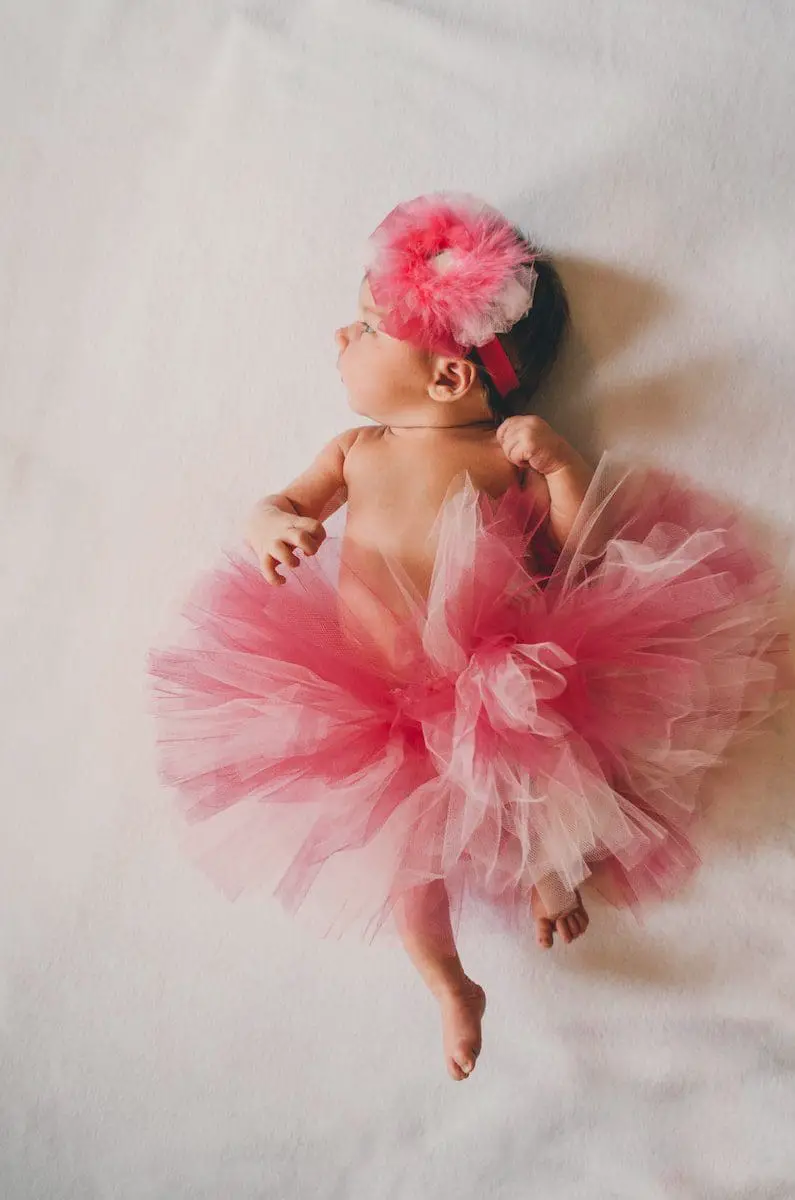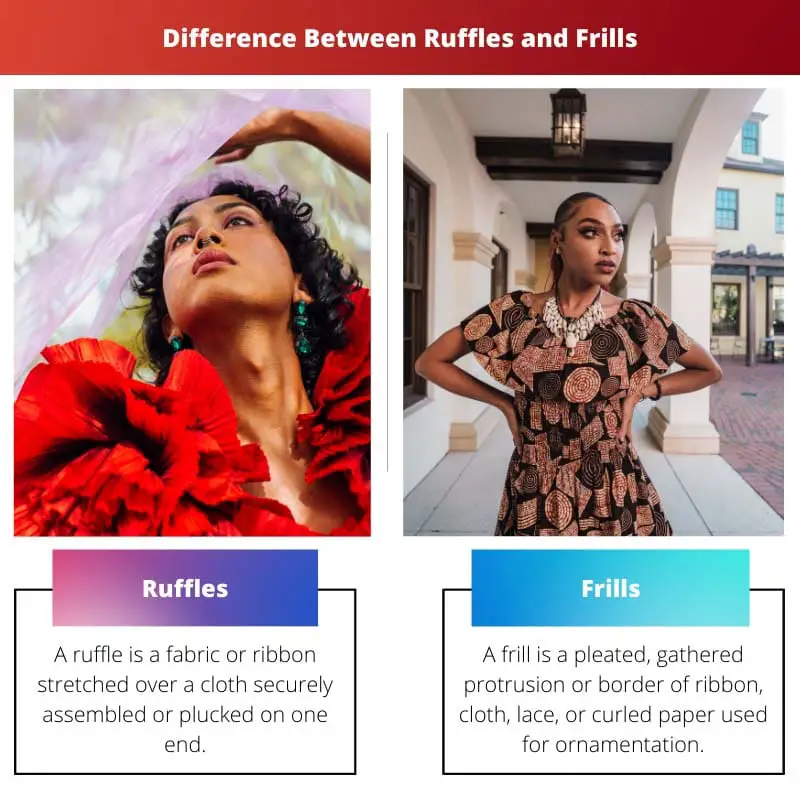The terms “ruffles” and “frills” are used in a variety of contexts. When used in English, they are used differently from when used in fashion, notably sewing.
Key Takeaways
- Ruffles are strips of fabric gathered or pleated on one edge, creating a wavy, decorative effect.
- Frills resemble ruffles but feature multiple layers and a more delicate appearance.
- Both ruffles and frills add visual interest to garments and textiles, but they differ in construction and style.
Ruffles vs Frills
In fashion, a ruffle is a fabric strip pleated and sewn along the edge of another garment to create a decorative frill. It is made with lace, ribbon and fabric to design necklines and blouses. A frill is a gathered fabric, lace or ribbon used for decoration purposes.

Ruffles or furbelow are a fabric, lace, or ribbon strewn across a garment firmly gathered or pleated on one end and applied as a trimming to apparel, bedding, or other textiles in sewing and dressmaking.
It refers to the tiny pleats created with fabric, ribbon, or lace and stitched on the borders of skirts or dresses, or occasionally around the necks of dresses and blouses, in dressmaking or sewing.
Comparison Table
| Parameters Of Comparison | Ruffles | Frills |
|---|---|---|
| Definition | A ruffle is a fabric or ribbon stretched over a cloth securely assembled or plucked on one end and utilised as trimming to sewing and dressing clothing, bedding or other textiles. | A frill is a pleated, gathered protrusion or border of ribbon, cloth, lace, or curled paper used for ornamentation. |
| Origin | Ruffles originated in 15th century in Germany. | Firlls originated in 16th century in Spain. |
| Wideness | Ruffles are wider than frills. | Frills are less wide than ruffles. |
| Size | Ruffles are larger than frills. | Frills are smaller than Ruffles in size. |
| Delicacy | Ruffles are less delicate than frills. | Frills are more delicate than ruffles. |
What is Ruffles?
Ruffles are a pleated decorative fabric piece commonly used as a garment decoration. The etymology of the phrase ruffle is uncertain; however, it has been from the Low German word ruffled, which means “to wrinkle.”

What is Frills?
A frill is a pleated, gathered protrusion or border of ribbon, fabric, lace, or curled paper used for adornment, hair on the neck of a bird or animal,
wrinkling around the edge of a photographic film, and a luxury that is not necessary but cherished and valued when accessible.
It all began in 16th-century Spain when soldiers cut the sleeves of their top layer of clothing to show the garment beneath.

Main Differences Between Ruffles and Frills
- Ruffles are larger than frills, whereas Frills are smaller than Ruffles in size.
- Ruffles are less delicate than frills, whereas Frills are more delicate than ruffles

- https://journals.ashs.org/hortsci/view/journals/hortsci/31/4/article-p688c.xml
- https://journals.ashs.org/hortsci/view/journals/hortsci/31/4/article-p608c.xml

A well-written and detailed explanation of ruffles and frills. Thanks for the thorough breakdown!
The historical background on ruffles and frills is particularly noteworthy. I enjoyed the depth of content in this article.
Absolutely, the historical focus added an intellectual layer to the article. Great choice by the author.
An informative read, to say the least. I had no idea ruffles and frills had such distinct origins and characteristics.
I found it intriguing to learn about the etymology of the word ‘ruffle’. This article certainly provides a comprehensive understanding of ruffles and frills.
Absolutely, the historical context definitely makes for an engaging read.
I think the comparison table is a little misleading, especially when it comes to the delicate nature of ruffles versus frills. Maybe it could be outlined more objectively.
I don’t necessarily disagree. The delicate nature of ruffles and frills is a bit subjective and could be further elaborated upon.
I think it’s clear that ruffles are less delicate than frills, I don’t see how this is misleading.
Thanks for the insightful article! The information about the origin and history of ruffles and frills was particularly fascinating.
I agree, I had no idea about the history of these terms – very interesting!
The detail in the comparison table was very informative, but I think more examples of where ruffles and frills are commonly used would have added even more value to the content.
That’s a good point, it would have been interesting to see more practical examples of ruffles and frills in the context of fashion.
I think the focus on the construction and visual effect serves the main purpose of the article, though real examples might help.
It’s fascinating to see how ruffles and frills have evolved over time. This article provided a compelling analysis of their differences.
Agreed, the evolution of fashion through ruffles and frills is quite captivating.
Absolutely, it’s a testament to the enduring appeal of these decorative elements.